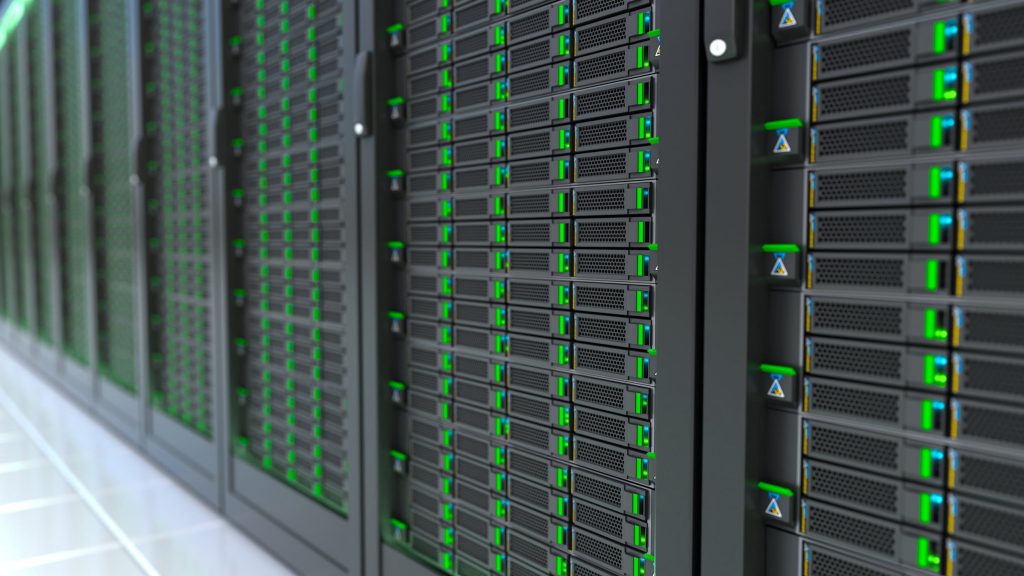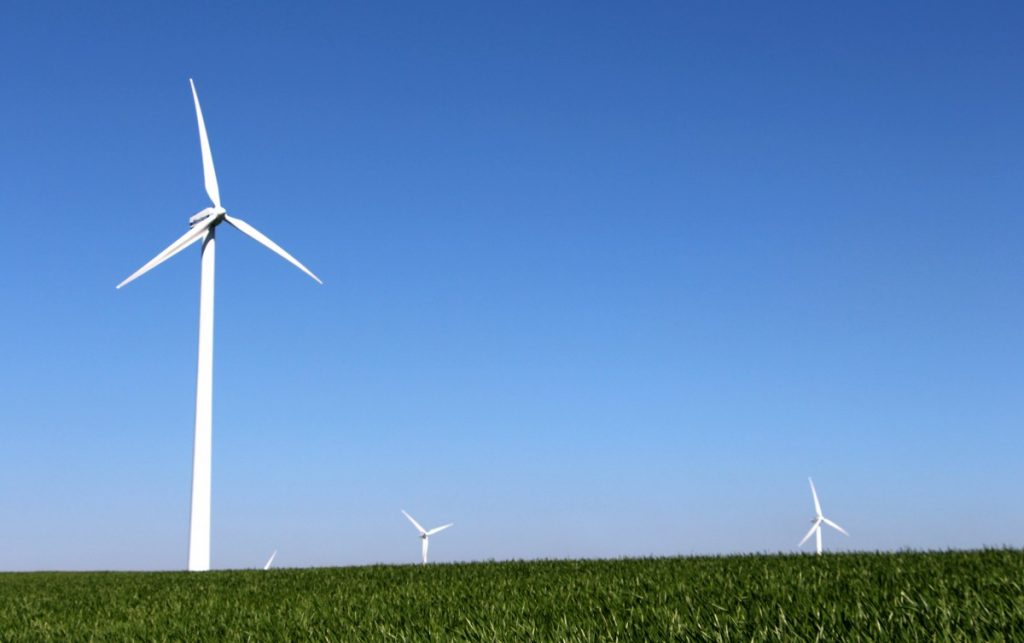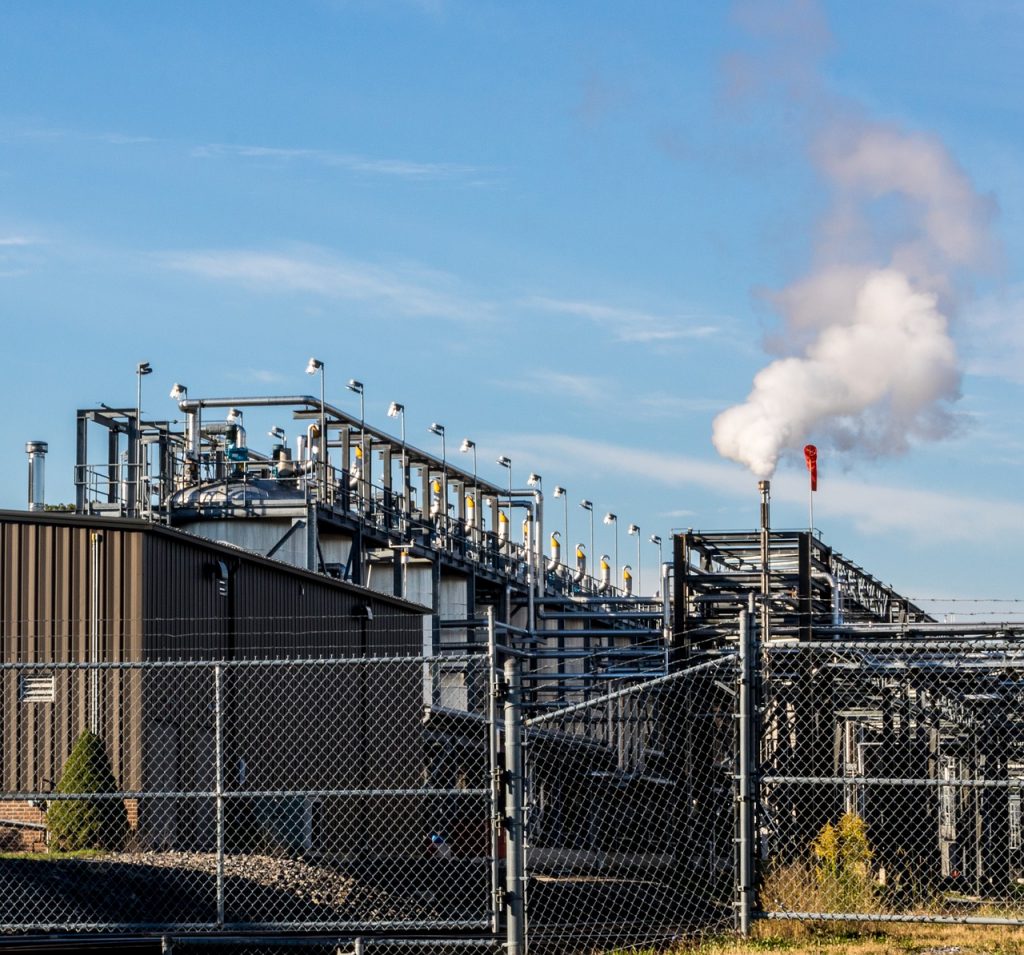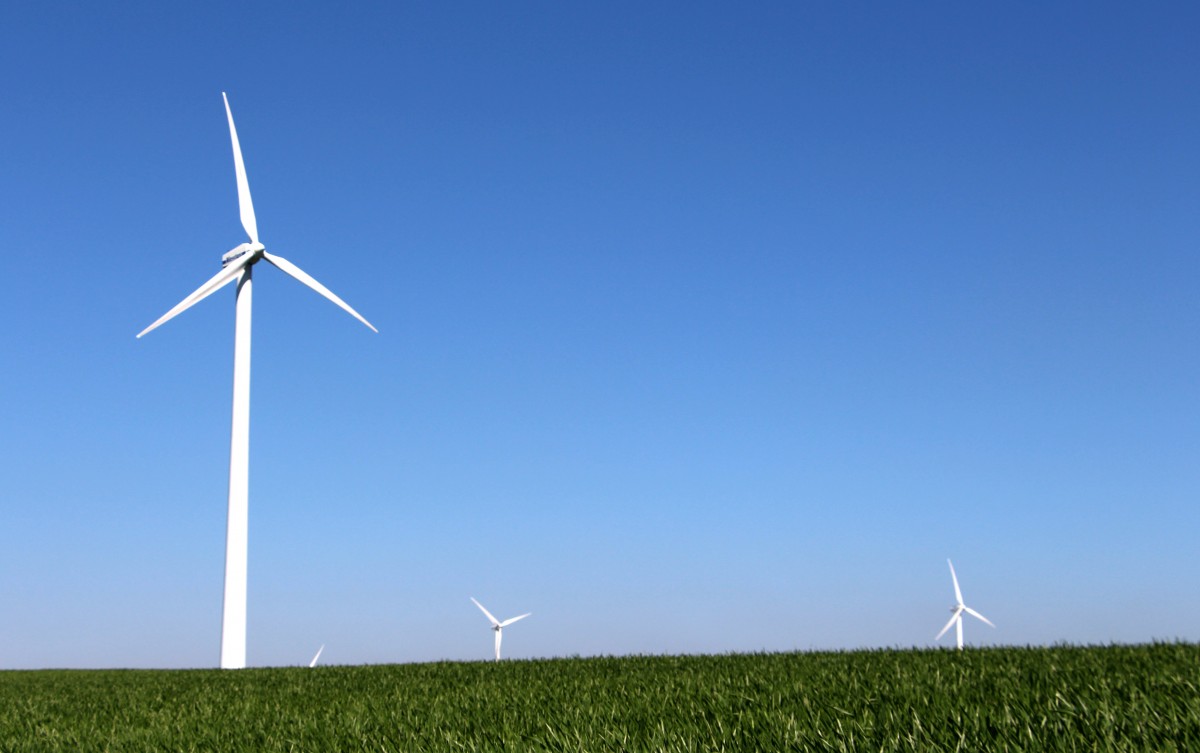
We have done some research about the carbon footprint of running cloud, data center and on-premise servers.
Our goal has been to find a way to estimate the carbon footprint from the servers we need to calculate emissions for in our business carbon footprint calculator. We wanted to find a good approximation of the emissions without forcing the business to enter everything about the server-model and kWh-consumption they use in our calculator.
This is an attempt to summarize our findings.
PS. Are you looking to lower your carbon footprint and contribute to a more sustainable world? We would love to help! Take responsibility for the carbon footprint of your lifestyle now!
We quickly realized that just requiring the number of servers running is a too rough measurement, often resulting in estimations 5-10x lower or higher then a precise calculation. So we needed to require more parameters from our business users to not be too off in our approximation.
After some experimenting and reading we found that there are two factors that both are fairly easy to find out and also make a big impact on the carbon footprint of servers, if the electricity used is green or not and if the servers are in the cloud or not.
Therefor we divide our calculations of the carbon footprint for servers into four categories. More categories could easily be constructed to achieve more precise estimations, but as stated earlier, our goal was also to make this an as easy as possible thing to find out for the business calculating the footprints.
The four categories we ended up with are:
- Cloud server using 100% green electricity
- Cloud server using non-green electricity
- On premise or data center-server using 100% green electricity
- On premise or data center-server using non-green electricity
To find out which category to use, you need to know if the electricity your servers are using is 100% green (or if the electricity not green is being offset in a credible way) and if your servers can be considered running in a cloud.
How do I know if the electricity our servers are using is 100% green?

With green electricity we mean fossil free electricity, so both renewable energy sources and nuclear energy are considered green – and are in our calculations considered having a zero climate impact. This is not 100% true since both renewable sources and nuclear sources have a carbon footprint from construction and maintenance, but the climate impact are negligible in comparison with electricity from fossil sources.
Depending on where your servers are located, there are different ways of finding out if the electricity your servers use is green:
- On premise-server – check your electricity contract or contact your electricity-provider
- Data center-server – check your contract or contact your provider
- Cloud server – this is a bit more tricky. But if you want the short answer per provider:
- Google Cloud – 100% green
- Microsoft Azure – 100% green
- Amazon AWS – Non green electricity for all locations except US West (Oregon), Europe (Frankfurt), Europe (Ireland), GovCloud (US-West), Canada (Central). More locations might appear in the future here: https://aws.amazon.com/about-aws/sustainability/
- Oracle – Non-green except for in the UK
- IBM – Non-green
- Alibaba – Non-green
Source and more thorough examination of the cloud providers can be found here: The State of Data Center Energy Use in 2018
How do I know if my servers are in the cloud?

This might sound like an easy question, but there are many local providers that have smaller cloud-like solutions that might be as energy effective and utilize servers as good as the larger ones.
So the question you should ask yourself here – if you are unsure if your servers can be considered being in the cloud or not – is if your provider can utilize servers about as effective as the larger providers and if they can have the same energy efficiency as the larger ones.
The difference between the carbon footprint of servers running in large cloud providers and not can be big. According to the studies we have found on this:
- A large cloud provider achieves about 65% server utilization rates vs 15% on-premises (https://www.nrdc.org/sites/default/files/data-center-efficiency-assessment-IP.pdf).
- A on-premises data center is 29% less efficient in their use of power compared to a typical large cloud provider that uses top facility designs, cooling systems, and workload-optimized equipment. (https://en.wikipedia.org/wiki/Power_usage_effectiveness)
We have decided to apply a simple factor of 0.5 for the energy consumption and server utilization of servers in the cloud. Amazon AWS claims a reduction of 84% in the amount of power required, but since we don’t have data for other providers we prefer to be bit more conservative here.
The energy consumption from manufacturing and use

In our carbon footprint business calculator we have chosen to use data from a standard 2019 R640 Dell server. This is deemed as a high end but not unusual server being bought 2019. An exact server model would give more precise data here, but we decided that it was not reasonable to expect people using our business calculator to know the exact name of the servers if the have been bought by the business, and in the cloud it’s close to impossible to know exactly what hardware model your server is run on anyway.
The data sheet for the server we chose can be found here: https://i.dell.com/sites/csdocuments/CorpComm_Docs/en/carbon-footprint-poweredge-r640.pdf
The server is consuming 1760.3 kWh / year and has a manufacturing climate impact of 320 kg CO2e/year, assuming a four-year life span.
If you are doing a calculation of your own and you know exactly what kind of server you or your provider uses, you should use those numbers instead.
The Four Carbon Footprint categories
We have used the Nordic Residual Energy mix as the factor for CO2e emissions per kWh. The factor is 0,37199 CO2e / kWh (updated 2022). The reason for us using this is that most business using our calculator are expected to be in the Nordics.
So, if we use these number and assumptions from above:
- Emissions from production of servers for use on premise: 320 kg CO2e/year
- Emissions from production of servers for use in cloud (since 50% is manufactured for use in cloud): 160 kg CO2e/year
- Emissions from green power consumption: 0 kg CO2e/year
- Emissions from non-green consumption for premise power or self-managed servers: 1760,3 kWh / year * 0,37199 CO2e / kWh = 655 kg CO2e
- From non-green cloud power consumption: 1760.3 kWh / year * 0,37199 CO2e / kWh * 0,5 = 327 kg CO2e
This results in these factors four our four categories:
- Cloud server using 100% green electricity: 160 kg CO2e / year and server
- Cloud server using non-green electricity: 487 kg CO2e / year and server
- On premise or data center-server using 100% green electricity: 320 kg CO2e / year and server
- On premise or data center-server using non-green electricity: 975 kg CO2e / year and server
Please comment to this post if you have any questions or comments!
If you want help with doing a GHG-emissions calculation for your business, feel free to use our carbon footprint business calculator or contact us at [email protected] – and if you want to start living a climate neutral life, join us today!

It would be very useful if one could estimate the number of servers used based on cost or similar. We use google cloud platform to run our services but use a plethora of services such storage, messaging, cloud functions as well as more traditional virtual servers. Estimating what this equals in number of servers is really hard!
Yes, I agree that it’s unfortunately quite hard to estimate. It’s a very good idea to estimate servers based on cost, we should look in to that. Thanks for the comment and idea!
Could u please share the source that says google cloud and azure are 100% green? I found different numbers (azure being at 60% now, google cloud not sure tbh.)
Hello Igor! Yes, the source is actually linked in the post somewhere 🙂 Here it is: https://docs.google.com/document/d/1eCCb3rgqtQxcRwLdTr0P_hCK_drIZrm1Dpb4dlPeG6M/edit
I want to know how many people a big data center like the ones you are talking about in this post serve and if we had smaller more regional data centers would that require less power and create less carbon emissions and how would it affect the connectivity of the world and functionality of data as I experience it now. This may be a silly question but I am coming from a place of no knowledge about servers and data centers other than they exist, create heat, use a lot of energy and I must work on one every day because my job is internet based.
I would love to understand better the scale of them and how energy usage and functionality change when you scale down. Thank you!
Hi Elyse! We’re doing calculations based on the number of servers in use. The size of the datacenter doesn’t matter much when comparing one server in a large datacenter to one server in a smaller one. If anything, larger datacenters tend to be more efficient since they share cooling and other infrastructure among all tenants.
Hey, I would like to know if I can get a data sheet of the emissions data that I could use for my research and formulate analytics models on in order to refine and combine data
Hi Advaita! All numbers we use are mentioned along with their sources in this post. We haven’t taken the time to collect a combined dataset, since for our use we simply use the method described at the end of the post for our calculator. Let us know if you have any questions about the data, we’re happy to give pointers on our reasoning!
As I understand it your estimates assume that the blade server is 100% dedicated to your own server activity. However, virtualization means that multiple servers can run on the same physical hardware. https://ailab-ua.github.io/courses/resources/ScienceDataCenterEnergy.pdf suggests that the number of instances running per server has increased by a factor of 5 since 2010.
I’m interested to know your take on this as there is interest in the climate cost of ICT in our local climate change action group winacc.org.uk.
Thanks!
Hi Robin! We assume 50 % dedication for cloud servers. We’re explaining the reasoning under the heading “How do I know if my servers are in the cloud?” above. Underlying study here: https://www.nrdc.org/sites/default/files/data-center-efficiency-assessment-IP.pdf. The reason for 50 % is that we lean on more conservative numbers to avoid under-counting emissions as there are many factors that differ between providers and performance tiers.
Excellent post, thank you! Very helpful.
Hello and thanks for this post, I’m wondering about the hypothesis used for the “Emissions from green power consumption: 0 kg CO2e/year”. From what I understand, “green power” means decarbonized but no source of electricity equals 0 CO2 (Solar, Hydro and Nuke all have standard numbers of emissions that you can use on your calculator). How did you make this hypothesis? It’s an unrealistic shortcut to use that 0 🙂
Hi Benjamin! Thanks for your interest in this topic. We follow the international guidelines developed for GHG reporting, the so-called GHG Protocol. They outline in their guidance that renewable energy is reported as zero emissions per kWh. This is also what producers will declare for their renewable energy production, in order with international agreements (for EU, notably the directive 2003/54/EG on the electricity market). You can read more about the GHG reporting requirements for energy here: https://ghgprotocol.org/sites/default/files/standards/Scope%202%20Guidance_Final_Sept26.pdf
Hi, I’m trying to research the impact on carbon footprint by improving an org’s document management. For example people saving local copies or multiple versions rather than one and using version history means document storage is massive. I gather that data storage will equal aviation for emissions. Surely reducing *what* we have to store as much as *how* we store it will help. Is there an agreed measurement for this?
Hi Katie! Yes, you are totally right – reducing the quantity that we store is definitely a part of the solution. Some data storage is necessary and it makes more sense to eg send an email rather than a letter, but we should make conscious decisions about how many duplicates we really need, and what needs to be stored in the cloud. Unfortunately, data on this is largely made unavailable to us by the largest companies providing the services. We are hoping this will change in the near future – Microsoft are already taking steps in the right direction, allowing azure users to track their associated emissions via Power BI. Send us an email if you have further questions that you think we could help you with!
Great blog! Our planet and the environment need help and I appreciate you doing your part and bring awareness. We all need each person on the planet to be more conscience of their carbon footprint. As a former Nevada Building Engineer who became a Realtor, I just finished a blog about energy savings and home certifications. Your readers might also want to check out it out – https://homesforsale.vegas/New-Construction-Homes. New homes are certainly made differently in this century! Thanks for contributing to the solution!
Kurt Grosse
https://homesforsale.vegas
Hi guys,
Thanks for the great article!
A high level question which you may not be able to answer is around relationship with virtual to physical devices.
If, in your example, “On premise or data center-server using non-green electricity: 916 kg CO2e / year and server”. If 100 Virtual servers are run on that one physical server then can I roughly say each of my virtual servers is running at 9.16 kg?
Thanks!
Hi Steve! Yes, sounds like a good rough estimate as long as the virtual servers are doing about the same type of processing! /Kalle at GoClimate
Hi Kalle,
Really interesting blog. One question I had was on the emission for production of servers. Why is the cloud number 50% of the number for on-premise ? Surely the production emission would be same for an individual server whether on-premise or in cloud ? Trying to understand why you would apply a 50% factor to the cloud server production emissions number.
Many thanks !
Hi Chris!
A large cloud provider achieves about 65% server utilization rates vs 15% on-premises. We assume conservativly that that makes the footprint about 50 % for cloud servers. We’re explaining the reasoning under the heading “How do I know if my servers are in the cloud?” above. Underlying study here: https://www.nrdc.org/sites/default/files/data-center-efficiency-assessment-IP.pdf.
Hope that helps!
Thanks for the link Kalle, very useful. The question I had was not about the power usage in relation to server utilization but about the base emissions for the server from it’s manufacturing (production) process. So essentially categories 1 and 3. Surely the CO2 emissions from the server manufacturing would be the same whether in public cloud or on-premise ? Or am I missing something ? Understand that the server utilisation and DC PUE differences are catered for in the 0.5 difference for categories 2 and 4 for the power usage emissions.
Hi Chris! Thanks for getting back, now I understand your point. I can’t recall where that 50% production factor comes from, it seems reasonable to assume that the production emissions are the same no matter if it’s produced for the cloud or not. Thank you for pointing this out!
Hello,
Thanks for the article. I’m doing similar calculation for our on-premises (big) datacenters. I’m doing it at a global level only (sum of all its content without distinction). But in a few months, I’ll need to calculate the impact of a VM (virtual machine) and before that, of the physical server on which it runs.
And so I think a large part of the IT is missing: for a server to function properly, it needs some (possibly external) disks, some switches, routers, firewalls, administration infrastructure (all of which needing also disks, network equipements, cables, etc.).
So the impact of one server is much more than what you’ve calculated above…
You did not consider the PUE to calculate the carbon emission of a data center. Not every service provider provide power consumption for a server. If I consider 1760.3 kWh / year then is it means that server utilization is 100%? Could you please tell me how number of cores and server utilization affects the power consumption of a server?
Great blog post, thank you for this! I came to your blog while I was researching about a comparison of carbon footprint from cloud storage and on premises storage. Do you happen to know whether this particular comparison was done anywhere?
Reason for my research is that my company (130k employees) would like to understand what carbon savings potential we would have by storing our data in the cloud rather than in our own data center.
What about the backup generators for the field servers?
Hi Lora! Yes, that is a good question. This article only covers the carbon footprint of servers in the cloud and on premise, and does not cover backup generators for field servers. That would have to be added on top of this.